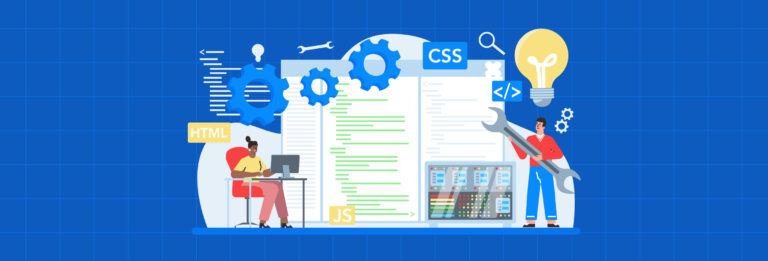Traditional hiring methods are no longer effective for recruiting top talents. Emerging technology like AI and gamification in hiring have become essential for creating a robust team. For example, legacy interview questions often fall short when assessing the candidate’s true potential; especially when evaluating a candidate on multiple fronts such as experience, work ethic, and ability to perform under pressure.
Keeping a good candidate engaged during the hiring cycle is becoming a lot more difficult. A survey found that at present, there has been a 20% increase in the number of job seekers dropping out of the recruitment process. Hence, there’s a need to align the recruitment process with the demands of emerging talent. The need is aggravated by the rapidly evolving work environments.
Gamification in hiring has emerged as an effective way to achieve company-wide hiring goals. The process uses quizzes, puzzles, challenges, and other game-like elements during all the stages of recruitment. Companies using gamification for recruitment have found that game mechanics can be used for boosting candidates’ engagement. It also provides valuable insights into their personalities and abilities that traditional hiring processes cannot provide.
In this blog, we discuss the advantages of using gamification in hiring and the perks businesses can enjoy by using the gamification process.
What is gamification in recruitment and its importance?
Finding and hiring the best candidates is the primary responsibility of recruiters. They need to screen thousands of applications and generate a large pool of qualified candidates for the hiring managers to consider. The team then has the task of filtering out the deserving candidates from those who don’t have the required qualifications, skills, and experience.
Since the recruitment process involves a plethora of steps, it can be difficult to keep the candidates engaged and interested until the end. This is where gamification can help.
Using technology that couples AI and gamification in hiring, recruiters can effectively evaluate candidates before inviting them for the main interview. Also, when recruiters use gamification in recruitment, the process becomes exciting for the applicants as it involves elements like puzzles and quizzes. It allows candidates to proactively engage with the process, instead of the traditional one-way conversation.
Surveys have found that on average, companies using gamification for recruitment have a 60% increase in engagement during the recruitment process.
In addition to that, gamification in hiring also lets you create a simulated work environment where applicants can perform the tasks that they would do if hired. This way, you can assess their skills in action and see how they will face the challenges in their job.
How can you leverage AI and gamification in hiring?
![Blog- Engagement vs EX [Recovered]-20](https://leena.ai/blog/wp-content/uploads/2022/10/Blog-Engagement-vs-EX-Recovered-20.png)
Now that the importance of using gamification is established, let us look at four ways it can be used with artificial intelligence to create a robust hiring workflow.
Application filling
Candidates in all industries have to spend hours filling out job applications. They write and send their cover letters to recruiters and provide details about their past experiences and education. The task often ends up becoming tedious and lengthy.
With gamification, HRs can make the application filing interactive by asking the candidate to complete a game. This will make them engaged and even more interested in working for your organization. You can then evaluate the results from the game and decide whether to move on with the application or not.
Assessments
Recruiters spend a lot of time gathering qualifications and personal data of candidates. Instead, they can ask the applicants to play a game, depending on the department and role. This will give recruiters an idea of the individuals’ skills. What’s more, you can customize the gamified assessments according to the role being filled.
Personality tests
Personality tests and quizzes are highly effective in screening candidates for their fit. When moved onto gamified platforms, it can create a more engaging experience for the candidates and provide recruiters with tons of behavioral data points that can be used for a more accurate selection of candidates.
You can also ask questions that accurately assess their skills and competencies using AI for hiring and enhancing the overall candidate experience.
Pre-interview questionnaire
A pre-interview questionnaire allows recruiters to gather more information about the candidate than that provided in the resume and cover letter. It helps to determine whether a potential candidate meets the job requirements or not.
However, instead of sending them a questionnaire with tons of short and long questions, using a gamification interview form, HRs can ask them to play a game or conduct a quiz that evaluates their knowledge about a certain job role. This helps HRs to assess their abilities quickly and help cut through the boredom and other pre-employment testing procedures that can be time-consuming.
What are the pros of using gamification in hiring?
![Blog- Engagement vs EX [Recovered]-22](https://leena.ai/blog/wp-content/uploads/2022/10/Blog-Engagement-vs-EX-Recovered-22.png)
There are several ways in which organizations are experimenting with AI and gamification in hiring. Here are some of the benefits they see from the strategy change:
Better engagement
Using gamification in recruitment strategies can be an exciting and interactive method to screen potential candidates. It can also showcase your company culture as fun and enjoyable, thereby attracting more potential candidates.
Gaming elements usually cater to the millennials and Gen Z population, making the entire hiring process engaging. Further, games can also be effective for hiring older generations if you clearly explain the game’s purpose and its steps.
Faster response time
From sourcing suitable applicants to finally onboarding them, most recruitment processes are extremely lengthy and time-consuming. Tests or assignments often take several days for the applicants to complete and not to mention the time lost from back-and-forth emails.
Through gamified techniques and mechanisms, you can reduce the overall response and interview time. Further, you can screen and communicate with candidates in a fun way, test their skill sets, and filter them accordingly.
Better completion rate of assessments
Often, applicants fail to perform well in tests and interviews due to stress and intimidation. And sometimes, HR managers miss out on top candidates because their CV doesn’t have an eye-catching layout.
With gamification in recruiting, your candidates can get a fun and familiar environment where they can demonstrate their skills. Applicants can complete all the assessments without feeling anxious or bored. And this can help you assess their true potential and abilities for the role.
Reduced drop-offs from the recruitment process
The use of gaming elements in recruitment creates a fun environment for applicants, reduces the time to hire, and eliminates the time required for candidates to complete tests and assessments. Recruiters also get the advantage of not having to deal with multiple non-submission of evaluations.
Over the long run, this reduces the chances of a candidate dropping out of the process, thereby saving the company’s time, resources, and cost.
What are the cons of using gamification in hiring?
Although just like any other change in technology or process, using gamification in recruitment comes with a few drawbacks as well. Some of them are:
Informal assessment
Through recruitment techniques that leverage AI and gamification in hiring, it can be challenging to assess specific soft skills, such as empathy, emotional intelligence, and negotiation abilities. Further, the gamification assessments are based on predictive algorithms that produce automated reports and might not be effective in removing bias.
The older generation of talent may be unfamiliar with games
Gamified technologies are preferred mainly by millennials and Gen Zers compared to other generations who are used to traditional recruitment procedures. Older generations are more familiar with the evaluations during conversations and might not be comfortable getting hired via games.
Higher chances of mistakes
Gamification is a relatively new method to assess a candidate’s potential for the respective role. However, it’s essential to understand that your applicants might not be ready for it. Since gaming using elements during recruitment might be unknown and scary to your potential candidates, there are high chances of mistakes in assessments, which can further result in hiring the wrong person for the job.
![Blog- Engagement vs EX [Recovered]-21](https://leena.ai/blog/wp-content/uploads/2022/10/Blog-Engagement-vs-EX-Recovered-21.png)
Conclusion
To successfully implement AI and gamification in hiring, it’s critical to bridge the gap between the pros and cons mentioned above.
Gamification in hiring has the potential to make the entire process of recruiting seamless and engaging for candidates. Using AI-powered software during the hiring process allows HR managers to get insights into the candidate’s skills and expertise. It also gives an overview of how the overall process is performing. Further, it can help eliminate the recruitment challenges with greater visibility into data, enabling the recruiters to make effective, data-driven decisions.
Want to know how AI-powered HR software can automate HR processes?






